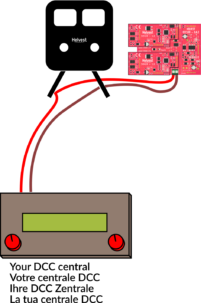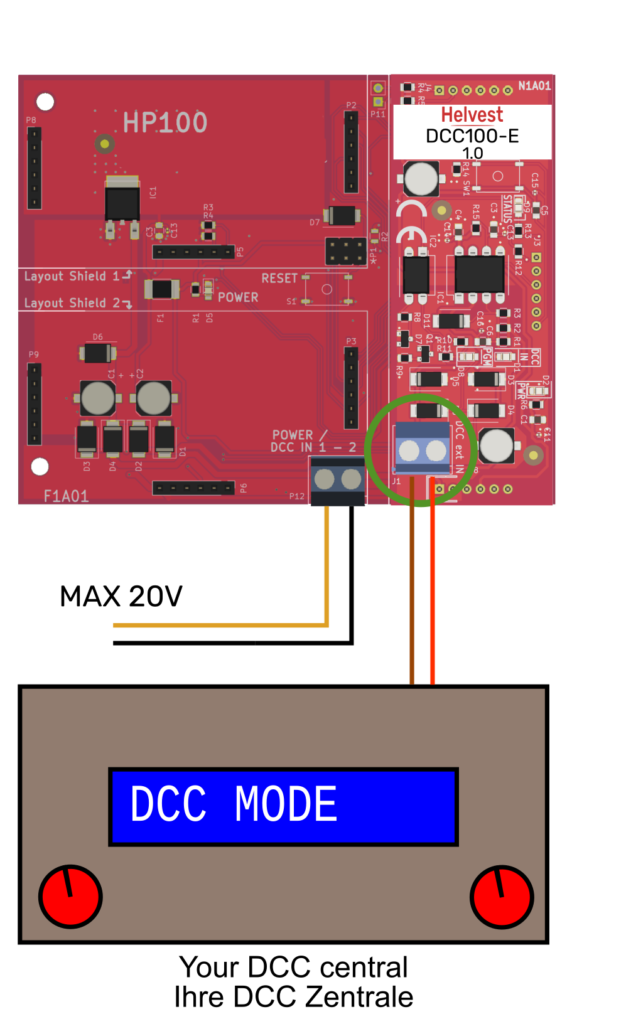Two options for powering accessory decoders
Tags: DCC digital (en), DCC100-E(en), DCC100(en), HP100 (en)
Comments are closed.
What does it mean to “power” a decoder?
Electronic devices, as you know, work with electricity flowing through wires. But these wires are not all the same. In most devices, including model railway decoders, there are two different functions: Some wires carry the energy for operation, others carry the information to be processed.
As an example, a PC connected to the Internet draws its energy from the power supply unit that is plugged into the 220 V socket. The connection data can be transmitted via Wi-Fi, but when it is transmitted by cable, the Ethernet cable is used, which, as we know, is different from the 220 volt cable for the power supply (and we don’t think anyone would think of switching them!).

How power and data are operated in DCC decoders
Decoders for model railways have to be installed not only for accessories but also in locomotives and trains. In this case there is only one communication channel with the command station, namely the track, and a very clever trick is used: DCC transmits both power and information over the same pair of wires! In this way, the train receives from the track both the energy to run and the information about what to do on the same channel: DCC decoders are called ” bus-powered”.
This solution is unavoidable, but it also has some disadvantages, so it is not always the best choice for switching and signalling decoders.

The power supply for accessory decoders
The NMRA defines “accessories” as all equipment that is essentially not trains and is on the layout, i.e. points, signals, lights, level crossings, etc.
Accessory decoders do not have the same problem as trains in that the signal has to run over the tracks: You can choose whether they are powered only by DCC or by a separate line, and as always, each situation has disadvantages and advantages.
Decoder power supplying with DCC
Power supply via DCC is the simplest situation in terms of connections: you connect the DCC wires (coming from the command station or the tracks) to the decoder. This configuration uses DCC as a locomotive, i.e. both power and instructions come from these wires.
In Helvest decoders, this solution is implemented with the DCC100 module. The DCC wires are connected to the HP100 and no further action is required.

External power supplying
An external (or separate) power supply to the accessory decoder means that the DCC decoder is only used for commands, while the power supply comes from an low-grade source.
The disadvantage is that the electrical system becomes a bit more complicated because you have to run two more wires coming from another transformer or power supply. However, the advantage is considerable: you avoid power being fed unnecessarily from the digital command station allowing it to use more power to run the trains.
With Helvest decoders, this is possible with the DCC100-E module (instead of the standard DCC100). This way you connect the DCC signal to the DCC100-E and the chosen power supply to the HP100.
Which external power source should I choose? It depends on what accessories you want to control. Basically, the HP100 accepts DC or AC power, between 7 and 20V. However, to ensure that the point motors move correctly, we recommend using 14-16V, which should be the ideal value for most accessories.
